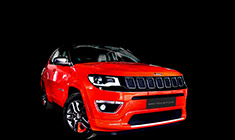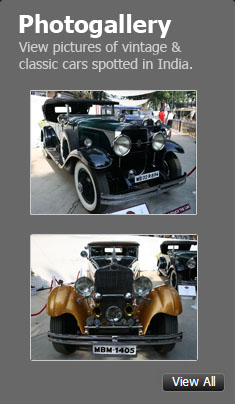News
Does 120 km/h speed limit on Eastern Peripheral Expressway make sense
The road surface is bumpy beyond 80 km/h. At 120 km/h, I would imagine it being a roller coaster-type ride.
BHPian MadinMumbai recently shared this with other enthusiasts.
Driving down the much-lauded Eastern Peripheral Expressway in Delhi, I came across signs setting the speed limit @120kmph. I couldn’t help but think- what are these guys smoking?
The road surface is bumpy beyond 80 kmph, and when the car hits a joint I find it difficult to keep my lunch. At 120 kmph, I would imagine it being a roller coaster-type ride. Does anyone else feel that 120 kmph is an abstract figure, plucked out of the air? I do hope other expressways are better designed else we are in for some serious traffic mess and mayhem.
Here's what GTO had to say about the matter:
There is no real science to our authorities assigning speed limits to roads, and I see blunders all the time. For instance, 30 kmph speed limit on the JJ Flyover is painstakingly slow and dare I say… dangerous too.
On the other hand, I saw a 100 kmph speed limit on such a 2-lane highway in Goa (not exactly this point, but a similar patch after this one)! Was very surprised - it's too high for this kind of road:
100 kmph for the arrow-straight Atal Setu is too low in my opinion. It should be 120 kmph.
Here's what BHPian Mystic had to say about the matter:
I have done research in civil engineering and am also a petrolhead. Let me give my opinion.
- In India, we have 120 kmph as the MAXIMUM speed limit for expressways, 110 kmph for national highways and 70 kmph for urban roads for the M1 category of vehicles. The M1 category includes most passenger vehicles which have fewer than 8 seats.
- What is the quality of road construction in India as per the world standards in specifications? The answer is poor for the obvious reasons. The Government releases the funds and related speed limits as per certain specifications for a type of road but in reality, the contractor has to take care of the obvious formalities and compromises on quality.
- Inspite of point 2, we still have engineers who will give their lives for the maintenance of quality in such prestigious expressway projects India is building now (my father is one among them as he retired as Chief Engineer of Roads with the Government). It is not only the quality of materials that go into roads but there are also a lot of so many parameters like camber etc that need to be taken care of otherwise the car going at 120 kmph will be thrown out tangentially and we see such stunts very frequently on our expressways in India. Some expressways are too good and some are not and hence it is up to the Driver to take a call and not get carried by the power of an individual car.
Camber in Road, refers to the curvature or slope provided to the surface of a road or any other paved surface. It is designed to ensure proper drainage of water from the road surface and provide improved safety and comfort for vehicles and pedestrians.
- There are risks involved with Indian roads in spite of a perfectly constructed expressway and 12-cylinder car, we never know if we see suddenly a person / 3-wheeler shared autos or an animal crossing the road at the most unexpected moment. I have personally travelled in multi-axle Volvo buses maintained by Governments and they go at a cruising speed of 100 kmph maximum even if the vehicle is capable of higher speeds because the Govt puts electronic control on their buses with GPS tracking. I wish the personal vehicle drivers also not go beyond 3 digits in India. Let us drive in a defensive manner and get a chance to live for another day to ourselves and our fellow passengers.
Here's what BHPian Shreyans_Jain had to say about the matter:
Depends on your car. While the surface is not baby-butt smooth, it is still very decent. Cars with good dynamics can easily cruise at 120 all day here. Of course, a host of vehicles, especially sub 15 lakh, are totally out of their depth at such speeds with their rear ends continuously bobbing up and down. List includes all Marutis except S Cross, Brezza and GV, all Hyundais apart from the current gen Verna, Venue and Creta, and all Hondas. We have started getting world-class roads, but mass-market cars with decent highway speed manners are still few and far between. Manufacturers have been guilty of short-charging us here, exactly like with crash safety.
Secondly, maintenance also comes into play here. Bad suspensions, tire sidewall bulges, improper pressures, balancing issues etc will all catch you out.
120 kmph is the default on all new world-class roads being built. Personally, I feel the infra is good enough for 150 kmph, but the cars are not there yet in terms of output. Already, lanes get choked by trucks not going faster than 60-70 and waves of wheezy 1.2NA engined Marutis, Hyundais and Tatas all going at about the same speed and struggling to overtake each other. It is literally the expressway version of 3 autos hogging 3 lanes, trying to sneak ahead. Delta in performance with the latest turbo petrols is too much. If we want American-style roads, we also need that kind of power from the engines.
Here's what BHPian MotoBlip had to say about the matter:
I get what you're saying. I've driven between Delhi and Jaipur twice on the new expressway, and despite all the hype about it being a world-class road, I wasn't impressed. The trip back, especially the first 70 kilometers or so from Dausa to Delhi, was really bad, especially considering that it's a new highway. Even though there wasn't much traffic, the road was bumpy and there were already patches on the surface.
On top of that, the toll charges are almost Rs2/km, so naturally, one expects better. Granted, the cars I used aren't top-of-the-line, but they feel perfectly fine on the Yamuna expressway, which is a decade old and I drive on at least once a month. Moreover, a colleague recently drove the same stretch in a Volkswagen Vento and had a similar experience, so I don't think the cars are to blame here.
Maybe there are geographical reasons for the road's condition, but right now, I'll be honest and say these highways aren't world-class yet. They seem to be rushing things, and I think that's why the quality suffers.
Check out BHPian comments for more insights and information.
















.jpg)



